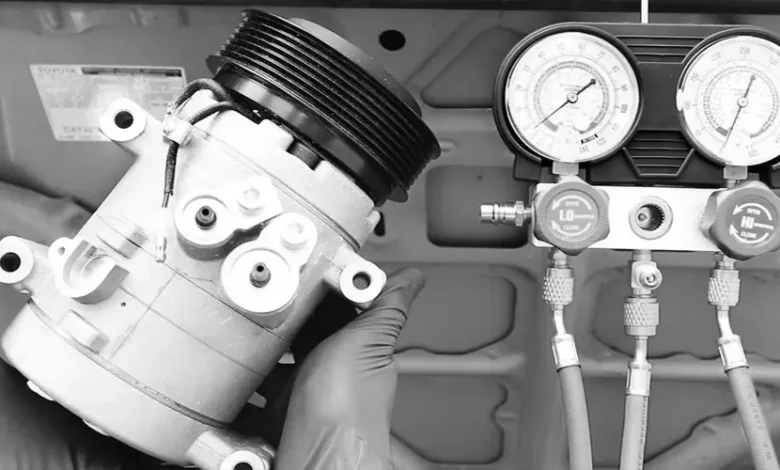Upgrading or Replacing a Car AC Compressor Control Valve: What You Need to Know

The AC compressor control valve is a crucial component in your car’s air conditioning system, regulating refrigerant flow to ensure efficient cooling. If this valve fails, your AC may struggle to provide consistent cooling, leading to discomfort and potential damage to the compressor. When faced with a faulty control valve, car owners often wonder whether to replace just the valve or the entire compressor unit. In this article, we will explore the different types of AC compressor control valves, compare replacement options, and provide recommendations on selecting the right replacement part.
Types of AC Compressor Control Valves
AC compressor control valves come in various designs depending on the type of compressor used in the vehicle. Understanding the different types can help you choose the right replacement:
- Electronic Control Valves – These are the most common in modern vehicles. They use an electronic solenoid to regulate refrigerant flow, allowing for precise cooling adjustments. These valves are energy-efficient and offer better performance.
- Mechanical Control Valves – Found in older vehicles, mechanical control valves operate based on pressure differentials. While they are simpler in design, they lack the efficiency and responsiveness of electronic valves.
- Externally Mounted Control Valves – Some vehicles have externally mounted control valves that can be replaced separately from the compressor, making repairs more cost-effective.
- Internally Mounted Control Valves – In certain compressor models, the control valve is built into the compressor itself, making it harder to replace without disassembling the entire unit.
Understanding the type of valve in your vehicle is essential in determining whether a standalone replacement is possible or if a full compressor replacement is necessary.
Replacing the Control Valve vs. Replacing the Entire Compressor
When dealing with a faulty AC compressor control valve, you have two main options: replacing just the valve or replacing the entire compressor unit. Each option has its own advantages and considerations.
When to Replace Just the Control Valve
- Cost-Effective Solution – Replacing the control valve is significantly cheaper than replacing the entire compressor.
- When the Compressor Is in Good Condition – If the AC compressor is still functioning well and only the valve is faulty, replacing the valve is a practical solution.
- Easier Repair – If your compressor has an externally mounted control valve, the replacement process is relatively straightforward.
When to Replace the Entire Compressor
- Extensive Damage – If the compressor is damaged due to prolonged valve failure, it is best to replace the entire unit.
- Internal Valve Design – If the control valve is integrated within the compressor, replacement can be challenging and may require professional disassembly.
- Frequent AC Issues – If your AC system has experienced multiple failures, replacing the entire compressor may be a long-term solution.
See also: Why Every Business Needs A Tech-Driven Claims Process
Choosing the Right Replacement Part
Selecting the correct AC compressor control valve is crucial to ensure proper functioning and longevity. Here are some key factors to consider:
- Vehicle Compatibility – Always check your vehicle’s make, model, and year to ensure the replacement valve is compatible with your AC system.
- OEM vs. Aftermarket Parts –
- OEM (Original Equipment Manufacturer) Parts – These are designed specifically for your vehicle and offer the best reliability and performance.
- Aftermarket Parts – While often more affordable, quality can vary. It’s essential to choose reputable brands when opting for aftermarket parts.
- Material and Build Quality – Look for valves made from high-quality materials that can withstand pressure and temperature variations.
- Warranty and Reviews – Check for warranty coverage and read customer reviews to ensure the part is reliable and durable.
Installation and Maintenance Tips
Whether replacing the valve or the compressor, proper installation and maintenance are key to ensuring the longevity of your AC system:
- Professional Installation – If you’re not experienced with AC repairs, it’s best to have a professional handle the replacement.
- Refrigerant Recharge – After replacing the valve or compressor, ensure the system is properly recharged with refrigerant.
- Regular AC System Checks – Periodic inspections and maintenance can help prevent premature failures and keep your AC running efficiently.
Final Thoughts
Upgrading or replacing a car AC compressor control valve is a critical decision that depends on the type of valve, the condition of the compressor, and the overall health of the AC system. Replacing just the valve can be a cost-effective solution if the compressor is still in good shape, while a full compressor replacement may be necessary in cases of extensive damage. By choosing the right replacement part and following proper installation and maintenance practices, you can ensure a reliable and efficient air conditioning system for your vehicle.




